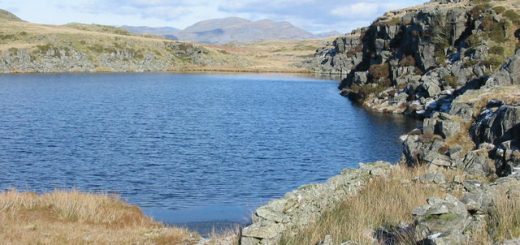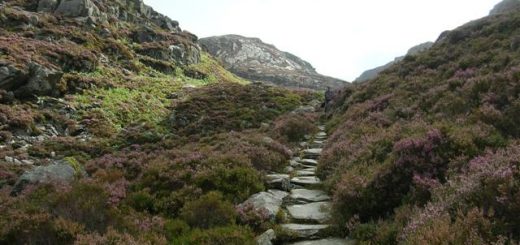The Copper Mines of the Great Orme
The Great Orme officially has ‘The Largest Prehistoric Copper Mines in the World’ according to the Guinness World Records team. There are more than five miles of tunnels and passageways that have been explored so far. The mining began in the Bronze Age, about four thousand years ago, when the mining tools included animal bones and stone hammers. They extracted copper ore’s such as malachite (Cu2CO3(OH)2), gold chalcopyrite (CuFeS2) and blue azurite (Cu3(CO3)2(OH)2) for over a thousand years. Some of the passages are so narrow that they could only have been made by young children, and some go as deep as 220 feet below the surface, where the water table lies. The mining by the Bronze Age people stopped when the demand for copper ore waned, and iron ore became the commodity of the future.
 Archaeologists have uncovered more than thirty thousand bones at the site, including cattle, sheep, pig, deer dog, and rodent. Some of these would have been food, other’s tools, and the rest naturally occurring or ritualistic sacrifices. Other finds from the site include over three thousand stone hammers, pestles and mortars, and the occasional ancient fingerprint left on the tunnel walls. There is no evidence to suggest that the miners were slaves. The mines are now a tourist attraction, open from March to the end of October, and well worth a visit if you are on the Great Orme and have the time.
Archaeologists have uncovered more than thirty thousand bones at the site, including cattle, sheep, pig, deer dog, and rodent. Some of these would have been food, other’s tools, and the rest naturally occurring or ritualistic sacrifices. Other finds from the site include over three thousand stone hammers, pestles and mortars, and the occasional ancient fingerprint left on the tunnel walls. There is no evidence to suggest that the miners were slaves. The mines are now a tourist attraction, open from March to the end of October, and well worth a visit if you are on the Great Orme and have the time.




Recent Comments